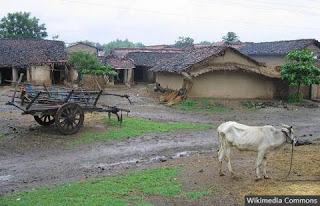हिंदू धर्म में कई प्रकार के साधु होते हैं और इनमें से एक हैं नागा साधु और अघोरी बाबा। देखने में इनकी वेशभूषा एक जैसी लगती है। मगर इनके साधु बनने की प्रक्रिया और रहन-सहन और तप-साधना में काफी अंतर होता है। नागा साधु कुंभ में बढ़-चढ़कर हिस्सा लेते हैं, लेकिन अघोरी बाबा कुंभ में नहीं जाते। आइए जानते हैं नागा और अघोरी में होते हैं कौन-कौन से मुख्य अंतर…
1. अघोर बनने की पहली शर्त है अपने मन से घृणा को निकालना। अघोर क्रिया व्यक्त को सहज बनाती है। मूलत: अघोरी उसे कहते हैं जो शमशान जैसी भयावह और विचित्र जगह पर भी उसी सहजता से रह सके जैसे लोग घरों में रहते हैं।
2. अघोरियों के गुरु स्वयं भगवान शिव होते हैं। अघोरियों को भगवान शिव का ही पांचवां अवतार माना जाता है। अघोरी श्मशान में मुर्दे के पास बैठकर अपनी तपस्या करते हैं। मान्यता है कि ऐसा करने से उन्हें दैवीय शक्तियों की प्राप्ति होती है।
3. नागा और अघोरी बाबा के पहनावे-ओढ़ावे में भी काफी अंतर होता है। नागा साधु बिना कपड़ों के रहते हैं। जबकि अघोरी ऐसे नहीं रहते। भगवान शिव के ये सच्चे भक्त उन्हीं की तरह ही जानवरों की खाल से अपने तन का निचला हिस्सा ढकते हैं।
4. अघोरी शाकाहारी नहीं होते। माना जाता है कि ये न केवल जानवरों का मांस खाते हैं, बल्कि ये इंसानों के मांस का भी भक्षण करते हैं। ये श्मशान में मुर्दों के मांस का भक्षण करते हैं।
5. अघोर पंथ के प्रणेता भगवान शिव माने जाते हैं। कहा जाता है कि भगवान शिव ने स्वयं अघोर पंथ को प्रतिपादित किया था।
6. वाराणसी या काशी को भारत के सबसे प्रमुख अघोर स्थान के तौर पर मानते हैं। भगवान शिव की स्वयं की नगरी होने के कारण यहां विभिन्न अघोर साधकों ने तपस्या भी की है।
1. अघोर बनने की पहली शर्त है अपने मन से घृणा को निकालना। अघोर क्रिया व्यक्त को सहज बनाती है। मूलत: अघोरी उसे कहते हैं जो शमशान जैसी भयावह और विचित्र जगह पर भी उसी सहजता से रह सके जैसे लोग घरों में रहते हैं।
 |
| Aghori |
 |
| Aghori |
3. नागा और अघोरी बाबा के पहनावे-ओढ़ावे में भी काफी अंतर होता है। नागा साधु बिना कपड़ों के रहते हैं। जबकि अघोरी ऐसे नहीं रहते। भगवान शिव के ये सच्चे भक्त उन्हीं की तरह ही जानवरों की खाल से अपने तन का निचला हिस्सा ढकते हैं।
 |
| Naga Sadhu |
4. अघोरी शाकाहारी नहीं होते। माना जाता है कि ये न केवल जानवरों का मांस खाते हैं, बल्कि ये इंसानों के मांस का भी भक्षण करते हैं। ये श्मशान में मुर्दों के मांस का भक्षण करते हैं।
5. अघोर पंथ के प्रणेता भगवान शिव माने जाते हैं। कहा जाता है कि भगवान शिव ने स्वयं अघोर पंथ को प्रतिपादित किया था।
6. वाराणसी या काशी को भारत के सबसे प्रमुख अघोर स्थान के तौर पर मानते हैं। भगवान शिव की स्वयं की नगरी होने के कारण यहां विभिन्न अघोर साधकों ने तपस्या भी की है।



















